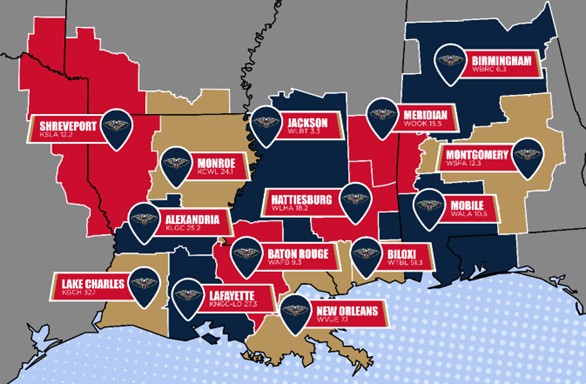AI For Captioning and Subtitles Is Great, But It’s Not A Panacea
By Ashish Basu, Executive Vice President, Worldwide Sales & Business, Interra Systems
By Ashish Basu, Executive Vice President, Worldwide Sales & Business, Interra Systems
The headlines about the remarkable performance of ChatGPT and other generative artificial intelligence tools have set expectations high for AI--and with good reason.
Various high school teachers and college professors attest to the work of ChatGPT in generating essays and other writings that are superior to what most students submit.
However, when it comes to generating closed captions and subtitles for distribution via government-regulated broadcast and internet channels, there’s much more to the story than generative AI.
It is safe to say generating captions and subtitles for the incredible amount of content consumed around the world would be impossible without AI, unless of course content owners had no limitation on funds and the number of people they could hire. However, AI alone isn’t enough.
What’s required is AI-Plus, and that plus is where solutions distinguish themselves.
Growing Demand
With the proliferation of digital platforms and the seemingly insatiable viewer demand for engaging content, there’s never been a better time for content owners to monetize their content by expanding their reach. For many, that means distribution of their content around the world.
The professional video industry's #1 source for news, trends and product and tech information. Sign up below.
Pursuing global distribution, however, requires content localization—often in the form of both subtitling in local languages and closed captions that frequently must conform to different regulations from country to country.
Consider the challenge one of our customers in Miami recently faced. The content owner tackled distribution of 25,000 of its premium content titles for SVOD distribution throughout Latin America. Between Latin America and the Caribbean, there are 33 different countries, each with its own regulations regarding closed captions to serve those with hearing impairments.
Not only did this content owner—and countless others pursuing global content distribution—face regulatory compliance requirements but also the need to present accurate and idiomatic-sensitive subtitles.
Government Compliance
Complying with government regulations is complicated further by the fact that regulations evolve over time.
For instance, consider closed captions in the United States. Line 21 captions were introduced in 1976. Fourteen years later, the Americans with Disabilities Act (ADA) became law, ushering in new requirements for closed captioning. In 1996, the Telecom Act further enhanced closed captioning expectations.
Then in 2010, President Barack Obama signed into law a new requirement for a “cc” button for closed captioning. Two years later, the FCC’s internet closed caption rules requiring closed captions for certain internet video programming went into effect.
The bottom line: Government regulations are not static. They change over time and by platform. Any content owner looking to distribute its content globally must ensure it conforms to governmental regulations that change over time.
Those regulations can be sweeping, governing not simply the accuracy of closed captions, but also other factors that make them easier to read, such as character and word count, row count, speed, how profanity is handled and synchronization with the talent on screen.
Can’t Blame AI
While AI can generate closed captions with accuracy in the high 90% under ideal circumstances, the reality of television is circumstances are not always ideal. Background noise and heavy accents can quickly degrade the accuracy of AI-generated closed captions.
Content owners, however, have no latitude with regulators. They simply cannot blame AI for missing the regulatory mark.
This is where the hype over ChatGPT and other generative AI solutions runs headlong into the reality of generating closed captions and subtitles. If closed captions do not meet regulatory requirements, content owners will be out of compliance and are potentially exposed to devastating business consequences.
Not only will the money spent to generate sub-par closed captions have been wasted and more money spent to bring them up to snuff, but also the solid business relationships those content owners are trying to establish with local partners around the world will be threatened.
Imagine trying to build an ongoing business relationship with a broadcaster or digital platform that’s faced fines and closer regulatory scrutiny because the content they licensed simply did not meet government requirements.
BATON Captions
Our Baton Captions does indeed rely on AI and machine learning (ML) algorithms for creation of closed captions and subtitles. However, as I alluded to up front, the solution also relies on an important plus factor.
We have designed Baton Captions with accuracy and regulatory compliance in mind. When content owners turn to Baton Captions, they can be assured we have address all compliance issues on a market-by-market basis.
Baton Captions supports sub-titling in most of the languages customers need to tap into the global market. The solution supports most European and Asian languages and also enables content owners to specify variants, such as multiple variations of Chinese and Brazilian Portuguese vs. the Portuguese spoken in Portugal.
In addition to closed captions and subtitling, Baton Captions also supports audio captions, synchronization, quality control (QC) and correction—all in a single platform. The solution can even link seamlessly to other Interra Systems tools, such as our enterprise-class QC and monitoring solution.
Together, our AI tools, are keenly focused on compliance and our vast language support, making Baton Captions the quintessential AI-Plus solution to today’s captioning requirements.
I recently was interviewed by Phil Kurz, contributing TVTech editor. To watch the interview, click on the link.
About the Author
Ashish Basu is Executive Vice President, Worldwide Sales & Business, at Interra Systems. He has more than 20 years of experience in software service, semiconductor IP and software product businesses. During that time, he has set up and managed global teams, channel partners and system integrators in the Americas, the European Union, South Africa and Japan.

